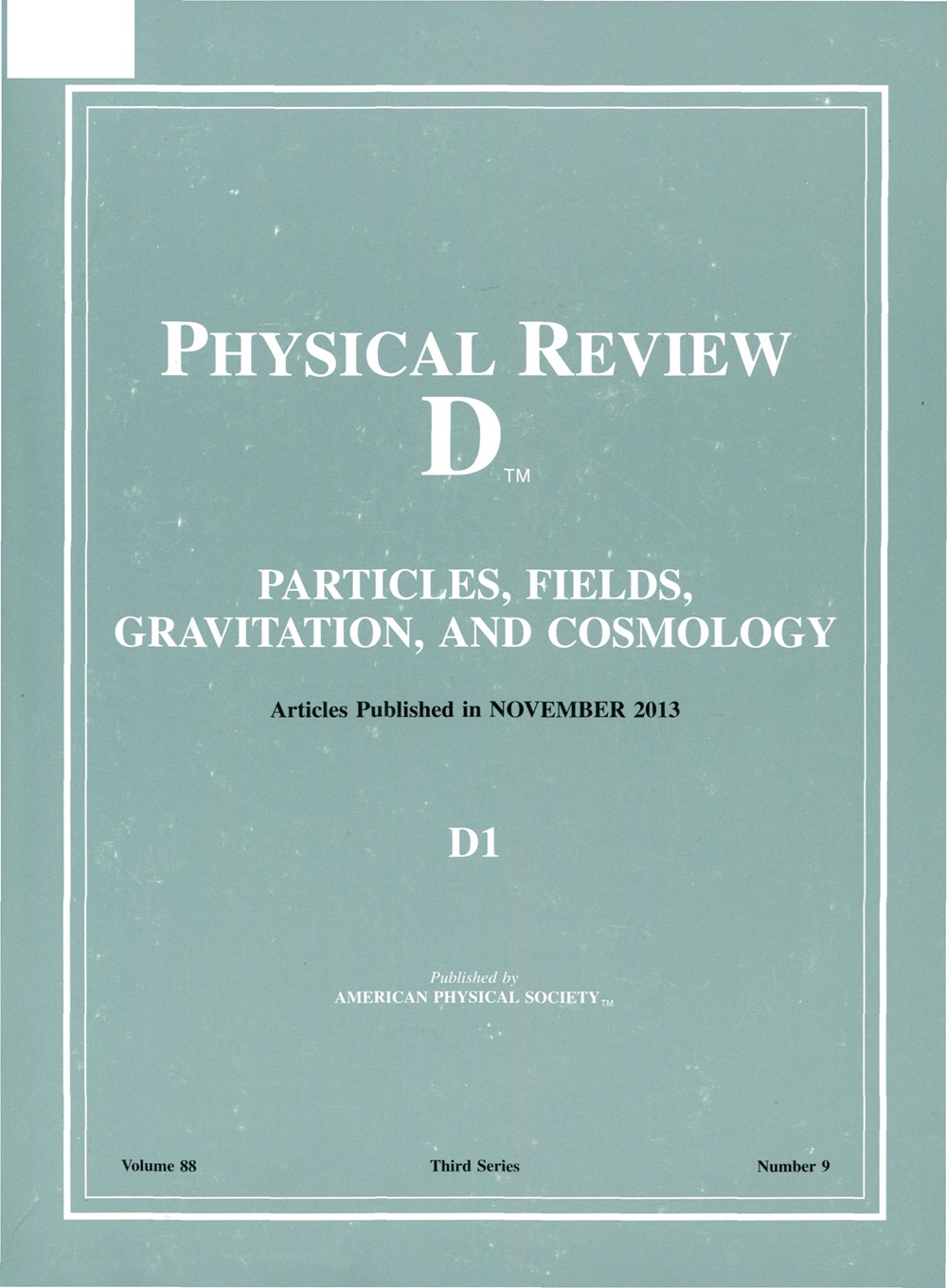蒙特卡罗模拟GRB数据以测试洛伦兹不变性违反
IF 5.3
2区 物理与天体物理
Q1 Physics and Astronomy
引用次数: 0
摘要
接近普朗克体系的能量尺度上的洛伦兹不变性破坏(LV)是理解量子引力现象学的关键探针。伽玛射线暴(GRBs)的天体物理观测为测试lv诱导的光谱滞后现象提供了一条有前途的途径;然而,LV效应和本征发射延迟之间的简并使解释变得复杂。本研究系统地研究了三种相互竞争的时滞模型:模型A (LV延迟合并恒定的固有延迟)、模型B(无LV的能量依赖的固有延迟)和模型C (LV延迟合并能量依赖的固有延迟)。我们利用在不同延迟机制下生成的模拟GRB数据集,对10个GRB的模拟观测结果进行贝叶斯参数估计。我们的研究结果表明,模型C一致地恢复所有数据集的输入参数,包括那些旨在模拟lv主导(模型A)和内在延迟主导(模型B)场景的数据集。相比之下,模型A和B很难调和在其他机制下产生的数据,特别是当面对来自GRB 190114C和GRB 221009A的高能TeV光子时。我们的分析证实,在模型C中加入能量相关的本征延迟对于建立稳健的低电压约束至关重要,有效地解决了先前解释多gev和TeV光子发射时的模糊性。基于Fermi-LAT观测到的来自8个GRB的14个Fermi-LAT多GeV光子、Fermi-LAT观测到的来自GRB 221009A的99.3 GeV光子、MAGIC探测到的来自GRB 190114C的1个TeV光子、LHAASO观测到的来自GRB 221009A的1个TeV光子,以及LHAASO观测到的来自GRB 221009A的1个TeV光子,验证了模型C作为未来低能级搜索的一般框架,得出了ELV≃3×1017GeV的亚光速低能级能级。这些发现与先前从费米- lat数据集得出的约束一致。这项工作强调了利用LHAASO和CTA等天文台对下一代LV研究进行LV和天体物理发射过程联合建模的必要性。2025年由美国物理学会出版本文章由计算机程序翻译,如有差异,请以英文原文为准。
Monte Carlo simulation of GRB data to test Lorentz-invariance violation
Lorentz-invariance violation (LV) at energy scales approaching the Planck regime serves as a critical probe for understanding quantum gravity phenomenology. Astrophysical observations of gamma-ray bursts (GRBs) present a promising avenue for testing LV-induced spectral lag phenomena; however, interpretations are complicated by degeneracies between LV effects and intrinsic emission delays. This study systematically investigates three competing time delay models: model A (LV delay combined with a constant intrinsic delay), model B (energy-dependent intrinsic delay without LV), and model C (LV delay combined with energy-dependent intrinsic delay). We utilize mock GRB datasets generated under distinct delay mechanisms and employ Bayesian parameter estimation on simulated observations of 10 GRBs. Our findings demonstrate that model C consistently recovers input parameters across all datasets, including those designed to mimic LV-dominated (model A) and intrinsic delay-dominated (model B) scenarios. In contrast, models A and B struggle to reconcile data generated under alternative mechanisms, particularly when confronted with high-energy TeV photons from GRB 190114C and GRB 221009A. Our analysis confirms that the incorporation of energy-dependent intrinsic delays in model C is essential for establishing robust LV constraints, effectively resolving prior ambiguities in the interpretation of multi-GeV and TeV photon emissions. The results validate model C as a generalized framework for future LV searches, yielding a subluminal LV scale of ELV≃3×1017GeV based on realistic datasets, including 14 Fermi-LAT multi-GeV photons from eight GRBs, a 99.3 GeV photon from GRB 221009A observed by Fermi-LAT, a TeV photon from GRB 190114C detected by MAGIC, and a multi-TeV photon from GRB 221009A recorded by LHAASO. These findings are consistent with earlier constraints derived from Fermi-LAT datasets. This work underscores the necessity for joint modeling of LV and astrophysical emission processes in next-generation LV studies utilizing observatories such as LHAASO and CTA. Published by the American Physical Society 2025
求助全文
通过发布文献求助,成功后即可免费获取论文全文。
去求助
来源期刊

Physical Review D
物理-天文与天体物理
CiteScore
9.20
自引率
36.00%
发文量
0
审稿时长
2 months
期刊介绍:
Physical Review D (PRD) is a leading journal in elementary particle physics, field theory, gravitation, and cosmology and is one of the top-cited journals in high-energy physics.
PRD covers experimental and theoretical results in all aspects of particle physics, field theory, gravitation and cosmology, including:
Particle physics experiments,
Electroweak interactions,
Strong interactions,
Lattice field theories, lattice QCD,
Beyond the standard model physics,
Phenomenological aspects of field theory, general methods,
Gravity, cosmology, cosmic rays,
Astrophysics and astroparticle physics,
General relativity,
Formal aspects of field theory, field theory in curved space,
String theory, quantum gravity, gauge/gravity duality.
 求助内容:
求助内容: 应助结果提醒方式:
应助结果提醒方式:


